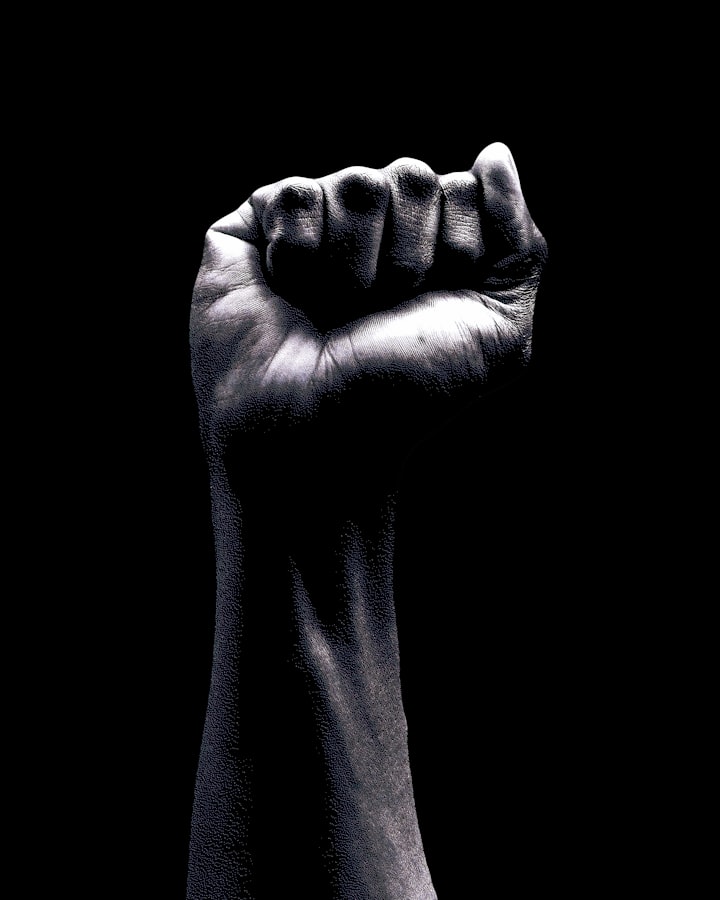Quick Back Pain Relief: Tips & Exercise-Ultimate Guide
Mastering Simple Strategies and Moves for a Pain-Free Life

If you've ever experienced the agonizing throbs of back pain, you're not alone. A survey from the International Associational for the Study of Pain found that nearly 80% of adults experience low back pain at some point. But don't let these numbers scare you.
You can navigate this pain and reclaim your life with the right tips and exercises. This guide empowers you with practical strategies to alleviate discomfort, from easy-to-apply tips to proven exercises. But remember, if your pain persists or intensifies, it's essential to consult a healthcare professional.
Understanding Back Pain
Understanding your enemy is the first step to victory; back pain is no exception. Low back pain typically originates from the muscles, nerves, and other structures in the spine. It can range from a dull, constant ache to a sudden, sharp sensation. Chronic low back pain, on the other hand, lasts for more than 12 weeks and can severely impact your quality of life.
A pain fact sheet from Phisopedia indicates that back pain is one of the most common medical problems, leading to limited mobility and even disability in severe cases. Some back pain can stem from neurological disorders, making it even more crucial to understand and manage this condition effectively.

Everyday Lifestyle Changes for Pain Relief
It's easy to underestimate the power of tiny changes. However, studies have shown simple lifestyle modifications can significantly impact your back health. Here's what you can do:
A. Maintain a Healthy Weight and Diet
A report published by Spine Health highlights the link between excess body weight and back pain. Carrying extra pounds, especially around your middle, shifts your body's center of gravity and puts additional strain on your lower back. Maintaining a healthy weight through a balanced diet can help alleviate this strain. Include plenty of fruits, vegetables, lean proteins, and whole grains in your meals, and stay hydrated.
B. Keep a Check on Your Posture
Your mother was right when she nagged about your posture. Poor posture can put unnecessary stress on your back and lead to pain. Keep your feet flat on the floor when sitting, and avoid crossing your legs. Your knees should be at or below the level of your hips. Maintain your shoulders relaxed and your body aligned against the back of your chair. If you're standing long, alternate your weight between your legs.
C. Don't Be a Statue
It's not just poor posture but staying in one position for long periods, be it sitting or standing, that can trigger back pain. Regularly change your position, stretch a little, and take short walks around the office or home. Even during long drives, take breaks to stretch your legs and back. These small changes can make a significant difference in your back health.
Don't worry if these changes seem overwhelming. Remember, every small step counts, and the goal is to integrate these habits into your daily routine gradually.

Say goodbye to sleepless nights caused by back pain. Click here to access your renewal routine.
The Role of Exercise in Back Pain Management
Exercise isn't just for staying fit or losing weight; it's also a secret weapon against back pain. Yes, you heard it right! Regular exercise can help reduce or even prevent back pain. But why, you ask? Let's dig in.
A. The Miraculous Benefits of Exercise
Exercise helps to keep your back muscles strong. Strong muscles are like your body's natural back brace, protecting your spine and preventing injuries. A study published by the University of Southern California found that patients who participated in aerobic exercise experienced less low back pain.
B. The Power of Aerobic Exercise
Aerobic exercises like walking, swimming, and cycling increase blood flow to your back, nourishing your muscles and spinal structures. The National Institute of Health report suggests that this enhanced blood flow helps eliminate inflammatory proteins contributing to pain.
C. Strengthening Your Core
But it's not just your back muscles that need a workout. Your abdominal muscles, often overlooked, play a crucial role in supporting your lower back. Strengthening your abs can help prevent back pain by keeping your hips level and maintaining proper posture.
Remember, while exercise is vital for back health, it's equally important to start slow and increase your intensity gradually. Always listen to your body. If a specific exercise causes pain, stop and seek advice from a healthcare professional.
In the next section, we'll explore some simple yet effective exercises you can do at home to strengthen your back and reduce pain.

Essential Exercises for Back Pain Relief
Now that we understand the value of exercise in managing back pain, let's dive into some easy exercises. Remember always to maintain a comfortable starting position that doesn't exacerbate your pain.
A. The Bird Dog Exercise
The Bird Dog is a fantastic exercise for enhancing balance and stability while strengthening your back and abdominal muscles. Here's how to do it:
- Begin on all fours, with your hands under your shoulders and your knees under your hips. This should create a 'tabletop' starting position.
- Slowly extend your right arm in front of you and your left leg behind you. Keep them in a straight line with your body.
- Hold the position for a few seconds, then slowly lower your arm and leg back to the starting position.
- Repeat the process with your left arm and right leg.
- Aim to do five repetitions on each side first, gradually increasing as your strength improves.
B. The Child's Pose
The Child's Pose is a gentle yoga posture that helps to stretch the back muscles and relieve tension.
- Start by sitting on your heels with your knees hip-width apart and your feet flat on the floor.
- Lean forward and extend your arms in front of you on the floor.
- Rest your stomach on your thighs and your forehead on the floor.
- Stay in this position for 30 seconds to 1 minute, taking deep breaths to help relax your body further.
- Slowly roll back to the starting position.
C. Piriformis Stretch
The Piriformis muscle in your buttock can often cause lower back pain when tight. Here's a stretch to help:
- Lie on your back with both knees bent and your feet flat on the floor.
- Cross your left leg over your right so your left ankle rests on your right knee.
- Use your hands to grab your right knee and pull it gently towards your chest. You should feel a stretch in your buttocks and lower back.
- Hold for 20–30 seconds, then slowly release and switch legs.
Exercise caution with these exercises and stop if you feel any discomfort or pain. Remember, the aim is to relieve pain, not cause more. Consistency is key here; aim to perform these exercises weekly for optimal results.

Say goodbye to sleepless nights caused by back pain. Click here to access your renewal routine.
When to Seek Medical Attention
While most cases of back pain can be managed at home with simple lifestyle changes and exercises, there are times when it's crucial to seek medical help. Here's what you need to watch out for:
A. When Pain Persists or Worsens
If your back pain persists for over a few weeks or worsens despite your home care efforts, it's time to visit a healthcare professional. It could indicate an underlying condition that needs medical attention.
B. Pain Accompanied by Other Symptoms
If your back pain is accompanied by other symptoms such as fever, unexplained weight loss, or problems controlling your bladder or bowels, it's essential to seek immediate medical help. These could be signs of a severe health issue.
C. Numbness or Tingling
Experiencing numbness, weakness, or tingling in one or both legs can indicate a neurological issue. If you have these symptoms and back pain, consult a healthcare professional immediately.
D. Back Pain Following an Injury
If your back pain starts immediately after an injury, such as a fall or an accident, seek medical attention immediately. It could indicate a fracture or other serious injury.
E. Pain Reaching Down One Leg
If your back pain extends down one leg below the knee, especially if it reaches your foot, it could indicate sciatica, where a herniated disk presses on the main nerve in your leg.

VII. Conclusion
Living with back pain can be tricky, but with the right strategies, you can reduce your pain and improve your quality of life. Remember the power of maintaining a healthy weight, practicing good posture, staying active, and doing regular stretching exercises. But most importantly, listen to your body and seek professional help when needed. Here's to a healthier, pain-free back!
VIII. FAQs
What is the fastest way to relieve back pain?
The quickest way to relieve back pain often depends on the cause and intensity of the pain. However, rest, applying an ice pack, over-the-counter pain relievers, and gentle stretching can provide quick relief. If the pain persists or worsens, seek immediate medical attention.
What is the best exercise to heal back pain?
There isn't a one-size-fits-all exercise to heal back pain, as it largely depends on the cause of the pain. However, strengthening and stretching exercises are typically beneficial. The Bird Dog exercise is effective as it strengthens the back and abdominal muscles to support your spine.
What is the single best exercise for lower back pain?
The best exercise for lower back pain can vary based on individual needs, but the 'Child's Pose' yoga stretch is an excellent option for many. This exercise stretches the lower back muscles, relieving tension and pain.
How do you release back pain?
You can release back pain through rest, applying heat or cold to the affected area, over-the-counter pain relievers, maintaining good posture, and regular exercise and stretching. Lifestyle modifications such as maintaining a healthy weight and diet can also help. For persistent or severe pain, seek professional medical advice.

[Disclaimer: This article contains affiliate links. If you choose to purchase through these links, we may earn a commission at no additional cost to you. These commissions help support our work in bringing you valuable health information. Please note we only recommend products we believe in and trust. Doing your own research before making a purchase is always recommended.]
Sources
https://www.iasp-pain.org/resources/fact-sheets/the-global-burden-of-low-back-pain/
https://www.physio-pedia.com/Low_Back_Pain_With_Mobility_Deficit
https://www.perplexity.ai/search/fa7041e8-65ca-48db-a940-83371022905b?s=u
https://www.spine-health.com/wellness/nutrition-diet-weight-loss/weight-loss-back-pain-relief
https://keck.usc.edu/aerobic-fitness-and-chronic-low-back-pain/
https://pubmed.ncbi.nlm.nih.gov/11179069/
About the Creator
Roland Canz
Blogger | Health&Fitness Expert






Comments
There are no comments for this story
Be the first to respond and start the conversation.